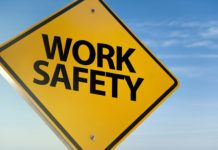Contrary to conventional wisdom, the up-and-coming generation of millennials might hold the key to an accident-free work environment in the industrial space. Their desire for a “touchy feely” management style makes them more receptive to a community- and relational-based approach to safety, which experts say is necessary for real change to occur.
The latest buzzwords—psychological safety, “just culture” and human performance—all emphasize a softer approach to management that focuses on positive reinforcement rather than coaching.
David Sowers, a founding member of Zachary-based human performance consultant Knowledge Vine, says creating a sense of community within the plant environment gives workers the confidence to report potential safety issues without fear of repercussions.
It all hinges on a culture based on positive reinforcement. Unfortunately, many managers take a decidedly divergent approach by focusing on mistakes rather than accomplishments. “You need to reinforce four positive things for every one time you have to coach,” Sowers says. “Most industries are probably skewed in the other direction.”
Building a community based on trust is crucial to the process. Sowers refers to it as a “just culture,” which is one based on fairness, community and an open-door policy. This, in turn, gives workers a vested interest in what happens at the jobsite or plant.
That’s admittedly difficult to create in the industrial market, particularly during boom times when plants and crews consist of traveling workers and high turnover rates. But Sowers says that makes it all the more important. “You can’t build and sustain a human performance culture if you don’t have a just culture, if you don’t have that psychology.”
Knowledge Vine says it reduced one company’s turnover rate from 80% to 40% by transforming its environment into a just culture. “The workers noticed that their voices were being heard,” Sowers says. “They recognized that the company was actually trying to improve the work processes and environment, rather than just yelling at them to pay more attention.”
Cindy Nassar, a Lake Charles-based psychotherapist and mental health counselor, says a fear of retaliation is the primary reason that workers don’t report unsafe conditions. As one of her services, she trains supervisors to recognize problems in industrial work environments.
Nassar gauges the condition of an organization’s culture by the rate in which its employees offer constructive criticism or offer suggestions. If minimal or nonexistent, “that’s an indication that they’re in a culture where they do not feel safe.”
“They’re not able to point out the hazards due to a fear of retaliation,” she adds.
There are other reasons, too. Poorly trained workers might not trust themselves to judge a situation properly. Or they might be linear, not creative or divergent, thinkers. Another reason: Previous attempts to point out a problem went unnoticed or unresolved.
A Cultural Shift
Nassar, who has worked in the industrial space for 20 years, says some of these issues could materialize in dangerous ways as the volume of industrial work increases, particularly in the Lake Charles area.
An influx of new workers, deadline pressures and even traffic delays are all part of a dangerous mix that could lead to safety issues.
That’s why managers and owners should develop an engaged work environment to ensure that safety doesn’t fall by the wayside. “Everyone’s under the gun,” she adds. “From the people who order parts up to the manager of the jobsite, at every level people are under a great deal of stress. They also come from different places; they’re displaced. I’ve seen a lot of those in my practice who are overwhelmed.
“If they’re under a big time crunch that involves a great deal of money,” Nassar notes, “people can’t judge a situation appropriately or effectively.”
As a first step, Nassar says managers should make it obvious—preferably in writing—that employees can safely communicate issues or ideas through an open-door policy and that there will be no retaliation.
It might also be necessary to shake up the management team. “You have to have effective managers who employees feel they can go to with their concerns,” Nassar says. “A good manager is in tune with their emotional intelligence and knows how to recognize emotions in others. And if something’s going on, they can take the pulse of their team and figure out what it is.”
Team meetings, focus groups and educational programs that identify safety goals are also productive, with the end goal of creating an environment where it’s safe to speak up.
Like Nassar, Knowledge Vine’s Sowers says a familial and relational approach is more conducive to safety than a heavy-handed one. “In a just culture, there’s trust, people are treated fairly, and people are comfortable and willing to speak up,” Sowers says. “It’s not who you know or any other kind of bias. It’s that we’re all going to be treated the same and fairly.”
That’s a barrier difficult to overcome in some settings, where managers are more likely to punish mistakes than recognize accomplishments.
In those environments, employees will never speak up for fear of repercussions or a negative outcome. Ultimately, they’ll make a crucial decision: Report a minor mistake, or say nothing at all.
Creating Community
Dr. Steven Simon, president of Culture Change Consultants in Larchmont, New York, says “psychological safety” is quickly becoming recognized as a necessary component in every work environment. Simon spoke on the subject at the American Society of Safety Professionals’ annual conference in New Orleans in June.
“Psychological safety is an intrinsic basic need, and if not fulfilled many of your other needs aren’t going to be fulfilled either,” he says. “In other words, if employees feel threatened, feel fear of retaliation, feel insecure in the workplace, etcetera, you’re not going to get the best out of their participation.”
In fact, Simon says physical safety is not possible without psychological safety, a concept introduced by Dr. Amy Edmondson of Harvard University in 1999.
“She introduced the idea that if you have psychological safety on a team, then you could have learning on the team, and if you have team learning, then you’re going to have much better team performance.”
Psychological safety, he adds, is a part of any successful work culture as it makes all programs work better. It’s also leadership driven. “The leader should have an open mind. The leader should ask employees what they think and get their input.
“In such cultures, people feel encouraged to make their contributions, they’re not afraid to be themselves,” Simon says. “Workplaces devoid of psychological safety have an abundance of cynicism, fear and intolerance.”
As a practical step, Simon says companies should create written team “norms” that outline these psychological safety standards. Grass roots teams led by workers on the front lines can also actively engage in psychological safety initiatives.
Culture Check: Near-Miss Reporting
Safety experts urge owners and teams to stop gauging the effectiveness of their safety programs through statistics, and instead by the quality of the dialogue between employees. After all, a company’s safety record does not accurately reflect the condition of its work environment, but merely reports the rates of events and errors, mistakes and injuries.
That’s why the frequency of “near-miss” reporting is the best barometer. Rather than focusing on accidents or mishaps, Simon says companies or teams should ask themselves, “Are my workers willing to make themselves vulnerable by reporting circumstances that did not directly result in an accident? How many people actually spoke up? How did we respond? These kinds of communication shifts really do make a difference.”
It should all be backed up by a well-established process for reporting near misses. “That’s the leadership side of it,” Sowers says. “Create a process that is anonymous, where no one is to blame, where we just want to learn from this near miss. Because the next time, the near miss is going to be a hit.”
How your leadership is perceived in the field is another indicator. Leaders need to be approachable so that workers feel comfortable in bringing up problems.
They also need to be dependable, so that workers feel assured that action will be taken if necessary.
Unfortunately, supervisors often lack the people skills to effectively manage a team. In those situations, Knowledge Vine provides what it refers to as COACH (Communicate, Observe, Acknowledge, Change, Help) training, an essential element in establishing a just culture. “One of your roles as a leader is making sure you’re clearly communicating expectations, that you’re observing the correct behaviors and not just measuring a result.”
In the end, any cultural changes should be noticeable to the worker. That way they’ll recognize the value in communicating and in “sticking their necks out” when there’s a problem. “We call it a change of scenery,” Sowers says. “If the worker doesn’t see a change in scenery, if it’s all just a bunch of lip service, you’re never going to implement change.”
Leadership should also be actively engaged in the field, so workers will see that there is accountability and a full organizational effort.
As an added benefit, those managers will have a more accurate view of the organization as information permeates more easily through the chain of command.
It’s Getting Better Out There
Nassar says she’s noticed some real progress in recent years, as companies begin to move away from these fear-based work environments. They’re also recognizing some tangible benefits other than safety in providing these psychological safety nets, such as decreased turnover rates and higher productivity.
“Studies have shown that millennials will take less money per hour if they feel like they’re part of something bigger,” Nassar adds. “If we don’t give them that sense of community and family, they’re going to go find it somewhere else.”
Nonetheless, Sowers says much work remains. “We’re leveraging technology more effectively to keep people safer, but we’re still bad at coaching,” he says. “We’re significantly behind other sectors such as aviation, nuclear power and pharmaceuticals.”









